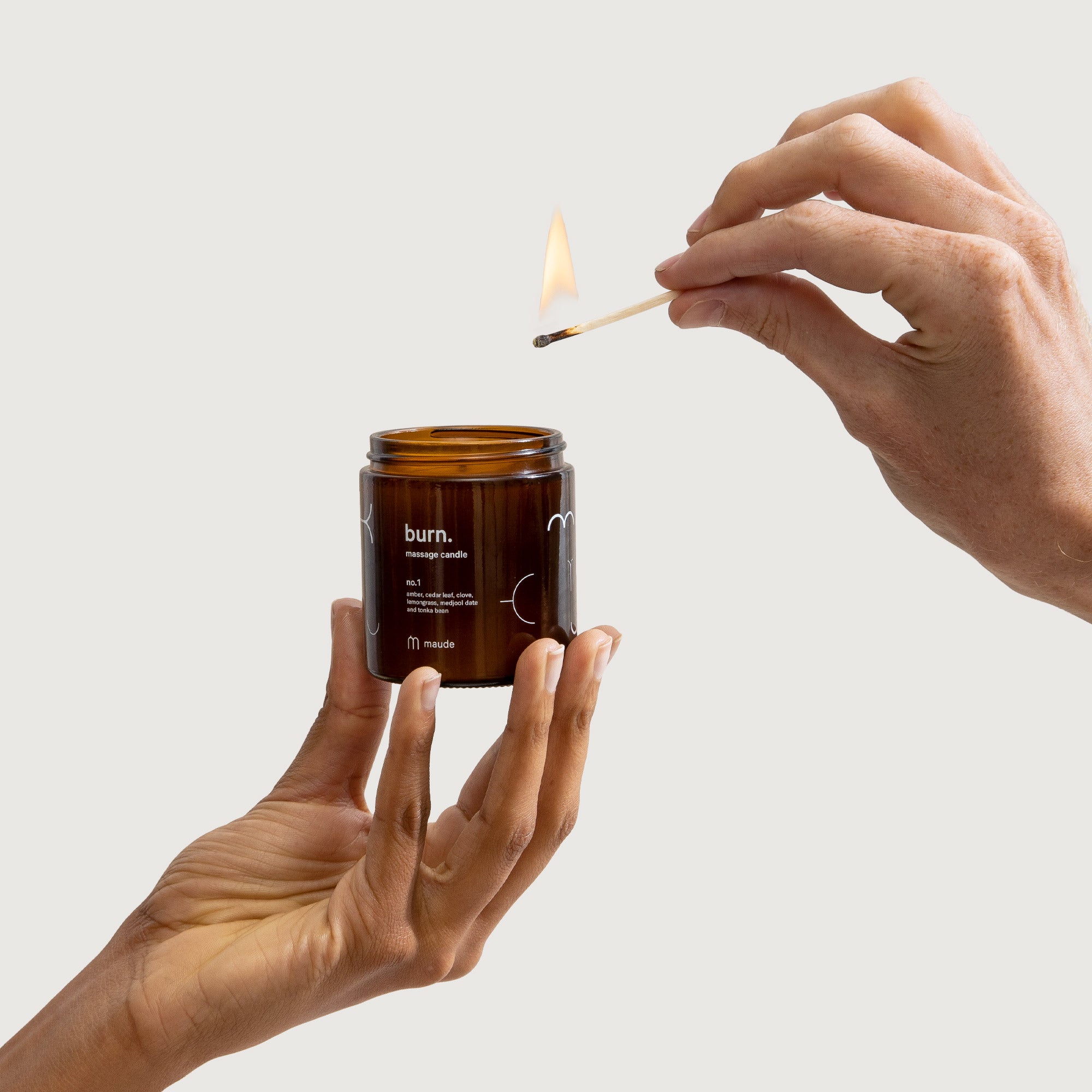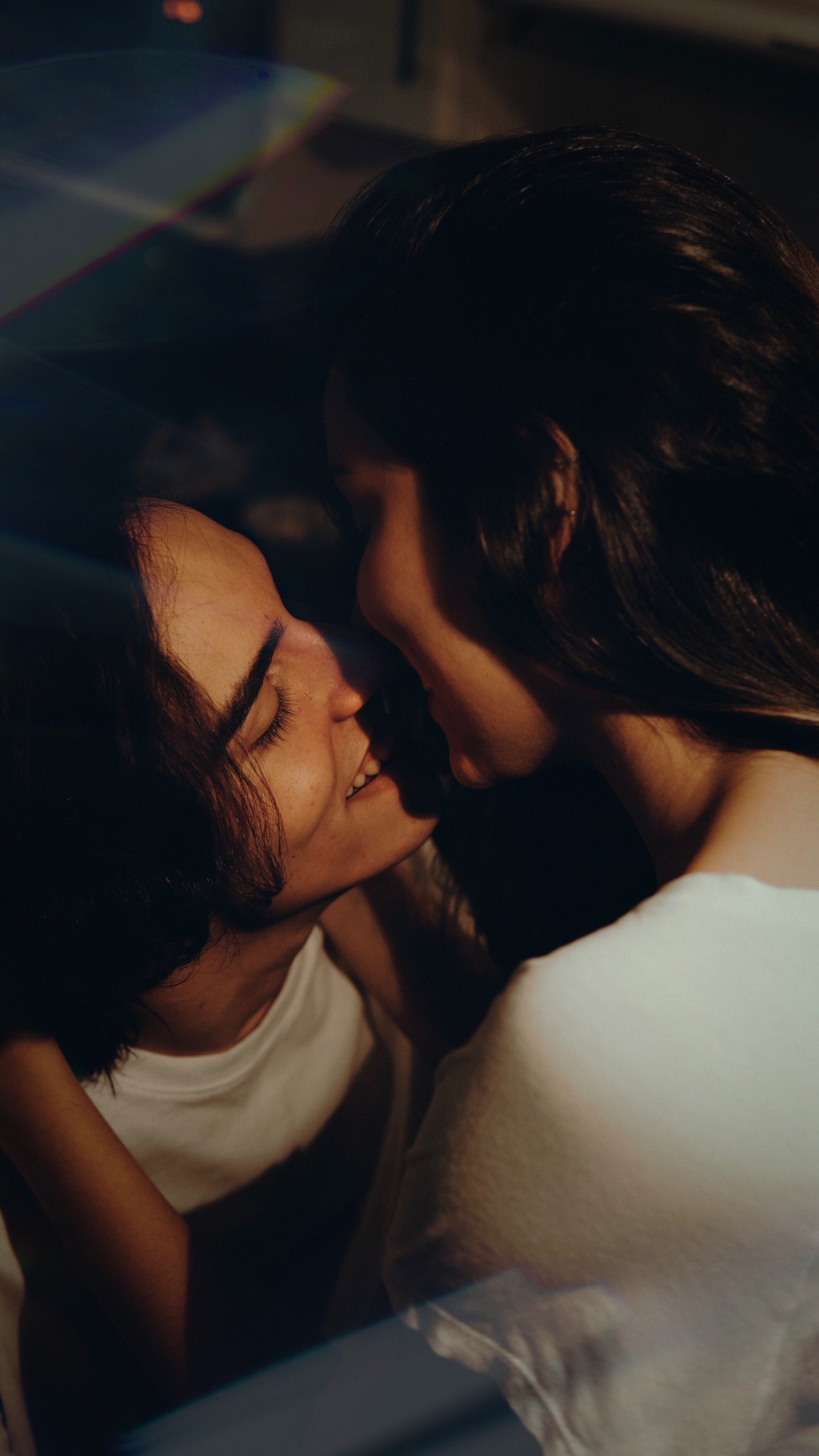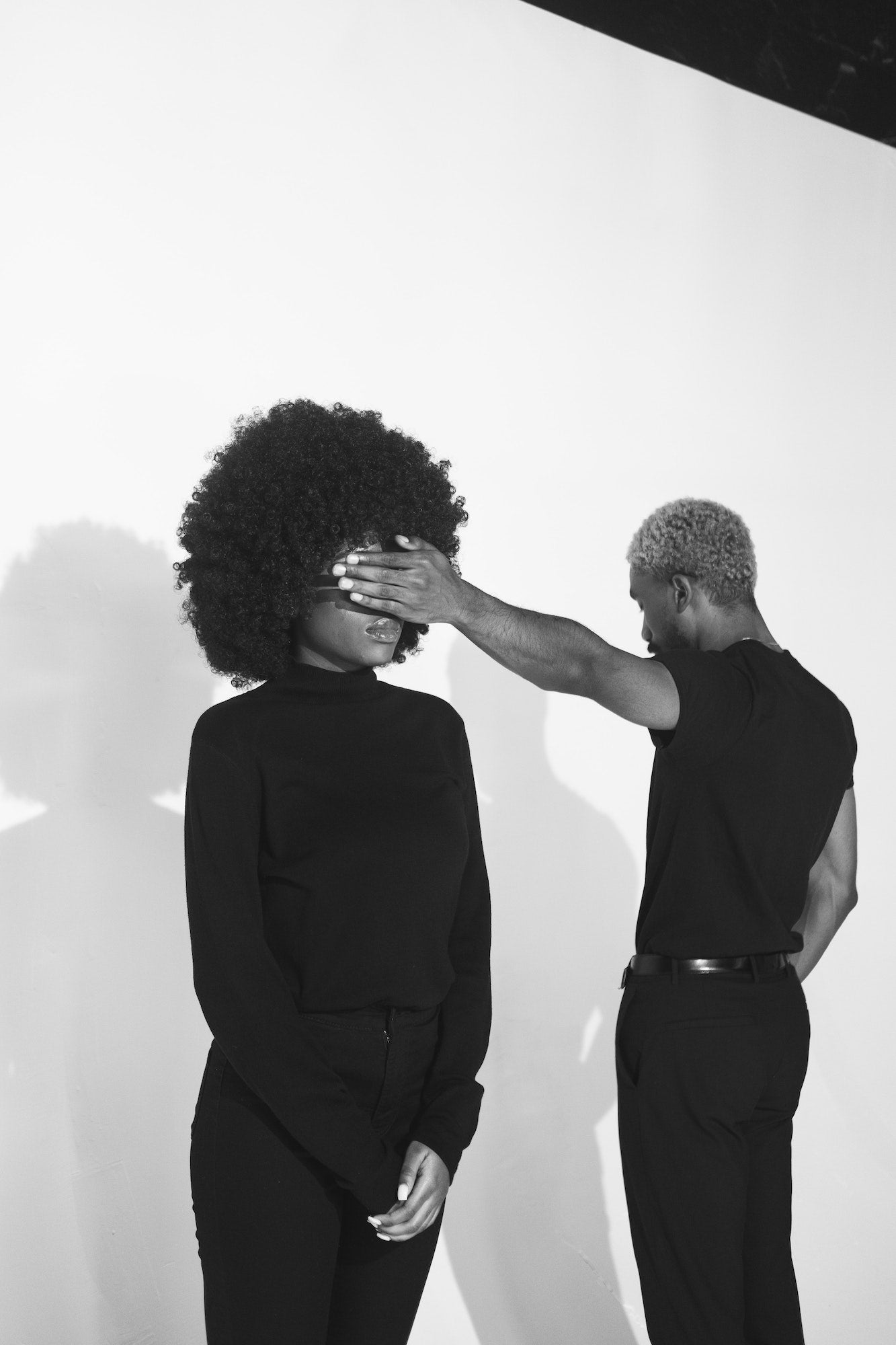why do we lean right when we kiss?

The science and art of snogging.
Think of the person you love to (or would love to) kiss. Now imagine leaning in and brushing your lips against theirs. You leaned right ... right?
If you’re right-handed, you probably did. A study by The Conversation found that most of us lean right when we kiss—in line with the fact that about 87% of the world is right-handed.
But that’s not all there is to it. Studies have also found that cultures that read languages from left to right (for example English or French) generally have a right-leaning kissing bias, but those that read right to left (such as Hebrew and Arabic) are more likely to lean to the left.
And it gets even more complicated. There’s also the fact that the recipient of the kiss will almost always mirror the laterality of the initiator of the kiss, regardless of their own head-turning bias.
So, in truth, the real reason we lean one way or another isn’t quite clear.
Why do we close our eyes when we kiss?
Now you might be wondering the impulse behind another common kissing behavior: closing your eyes. This instinct is so common that—if you ever find yourself kissing someone who doesn’t follow the convention—you might rightly feel something like shock (or at least amusement). According to a 2017 study in the Journal of Experimental Psychology, it’s an evolutionary advantage. The human brain is more equipped to focus on physical stimuli when visual stimuli aren’t a distraction. This means that you’re more likely to get really into the kiss—and (depending on the circumstances, of course) you may be more likely to move forward with intercourse.
But why do we kiss at all?
While philematologists—aka kissing scientists—haven’t been able to pinpoint the exact evolutionary origins, they’ve developed some solid theories. One camp posits that kissing is a learned rather than instinctual behavior, stemming from our early human ancestors when mothers may have chewed food for their babies before passing it to their mouths (kind of gross, we know).
Those who say it’s a more instinctual reason that many species rub noses as a sign of affection, not to mention that our lips and tongues are full of nerve endings that, well, just make kissing pretty damn enjoyable (and an essential part of foreplay).
Kissing also gives us clues to compatibility—and we’re not just talking about whether someone is good at it. Our saliva contains hormones and other compounds that can help our brains chemically assess the suitability of a potential mate. And for those already in a relationship, it helps strengthen the intimacy of a bond over time. So, we’re all for more kissing.
Do all cultures kiss?
But despite the science that assures us that kissing is indeed connected to compatibility and intimacy, it’s not quite as universal as you might be inclined to believe. According to researchers at the University of Nevada and Indiana University, fewer than half of the world’s cultures—just 46%—kiss romantically.
Romantic kissing is far more common in some areas of the globe than others: It exists in 100% of Middle Eastern cultures that were observed and 73% of Asian cultures, but just 13% of African cultures and 0% of Central Amerian cultures. In North America, it’s also less common than you might expect, with 55% of cultures engaging in romantic kisses. This research looked at a total of 168 different global cultures to get a good idea of how this behavior varies across the world. Researchers explained the differences they saw: “There is a strong correlation between the frequency of the romantic-sexual kiss and a society’s relative social complexity: The more socially complex the culture, the higher frequency of romantic-sexual kissing.”
That doesn’t mean that non-kissing cultures don’t show intimacy in their own ways, or don’t kiss at all. In some Central American and African cultures, kissing (often, on the cheek or the hand) is more commonly a sign of respect. Of course, that doesn’t mean that romantic kissing hasn’t become more widespread, especially through the media. The Neur tribe in southern Sudan, for instance, does not have a cultural history of kissing, but by the ’90s, teenagers picked up the behavior from western cinema—a practice that their parents were not likely to replicate.
The history of kissing
So exactly how did we come to kiss the way we do today? The history of kissing isn’t exactly straightforward, but here’s a general timeline you can consider. According to Texas A&M University Professor of Anthropology Vaughn Bryant, the origins of kissing are debated, but they most stemmed from early humans using their sense of smell to recognize each other. The earliest written references to kissing as we know it today come from ancient India (including the Kama Sutra)—so it’s believed that this is where romantic kissing originally arose. Once the ancient Greeks invaded, it spread around the world.
Kissing on the cheek is still largely popular in Europe—and this act was likely spread into Europe by Roman soldiers during the Gallic Wars. Kissing was also fairly common on the continent in the middle ages, when those of equal social standing kissed one another on the lips. The thing that put kissing out of style for a moment? Plague: King Henry VI of England banned kissing in 1439, as a public health decree—which is why curtseying, bowing, and handshaking eventually spread.
French kissing—aka, kissing with tongue—first earned its term around the 1920s, when Americans abroad were largely introduced to the technique by French women, and it caught on stateside after the second World War. Don’t let that fool you into thinking that kissing with tongue is a 20th-century invention, though—it’s just relatively recently (historically speaking) that we’ve had a name for it.
It did take a while for attitudes about kissing to reach where we are today. The first onscreen kiss came in the 1896 short The Kiss, which received an immense amount of media hype (if only audiences then knew of the steamy scenes that would come not even 50 years later down the line). “For the first time in the history of the world, it is possible to see what a kiss looks like… In the forty-two feet of kiss recorded by the kinetoscope, every phase is shown with startling distinctness… The real kiss is a revelation,” a newspaper article at the time reveled.




